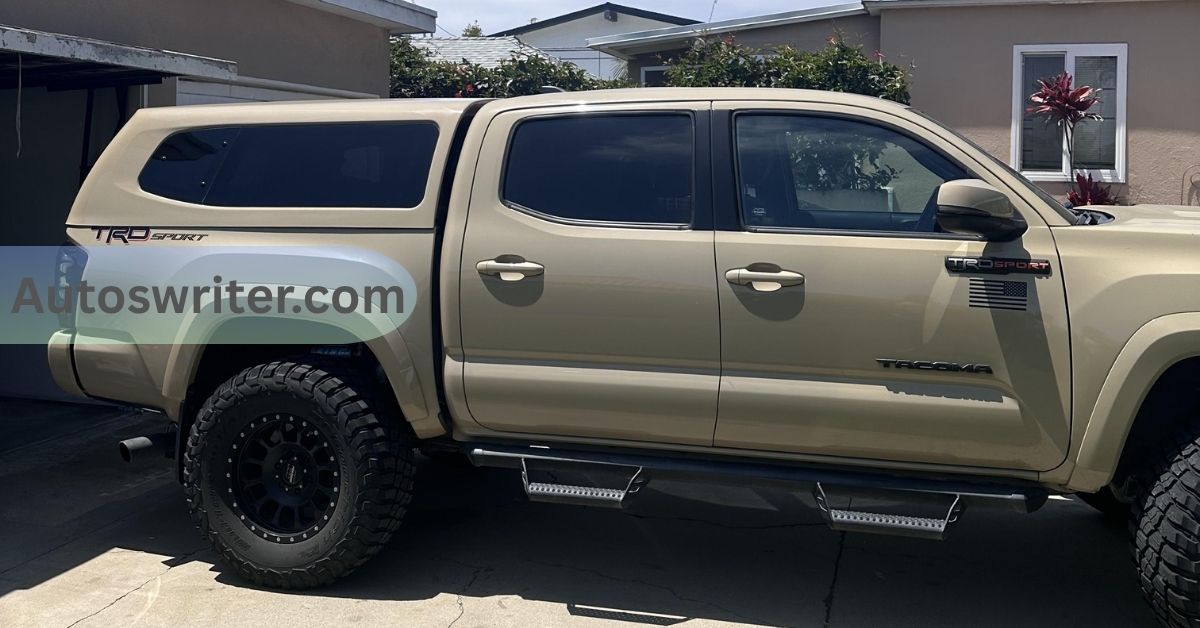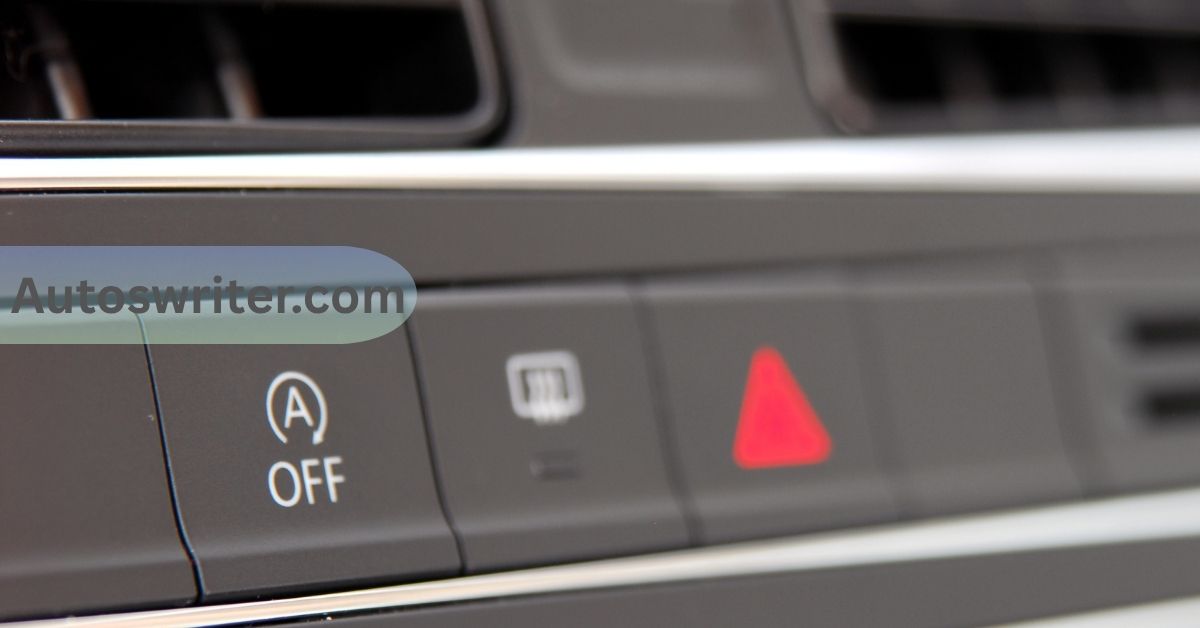An ARE camper shell is a hard canopy (also called a truck cap or topper) made by ARE (RealTruck) that fits over a Toyota Tacoma’s bed. It is typically moulded from fibreglass and painted to match the vehicle.
The shell locks to cover the open bed, keeping gear dry and secure. In other words, it turns the Tacoma’s bed into a covered storage area or tiny camper.
Many owners use shells for carrying tools, camping equipment, or pets – anywhere you need weatherproof, lockable space.
Tacoma Compatibility by Year, Trim, and Bed Length:
ARE makes shells to fit most Tacoma models and years. Shells are custom-shaped for the Tacoma’s cab style and bed size. For example, caps are available for both Double Cab and Access Cab Tacomas in both short (approximately 5 feet) and long (approximately 6 feet) bed configurations.
The fit is usually measured in inches; for example, a Double Cab long-bed shell is approximately 23 inches tall on the truck. The same shell often fits both 2WD and 4WD models, as well as any trim (SR, TRD, Pro, etc.) of a given year and bed type. For older 2nd-gen Tacomas (2005–2015) and 3rd-gen (2016–2023), many ARE models are available.
The new 2024+ Tacoma is just getting caps now; as of mid-2024, ARE is one of the first to offer a shell for the new Tacoma. (Another new company, SmartCap, plans a 2024 release.)
When shopping, confirm your exact model year and bed length to ensure a proper fit. Dealers list specs by “Full” or “Mid” cab and bed. For example, a 6′5″ (78″) Double Cab bed has its shell size. ARE’s spec sheet shows a V Series cap for a full-size long bed that weighs about 175 lb. All ARE shells attach via clamps to the Tacoma’s bed rails – no drilling is needed.
ARE Shell Models for Tacoma:
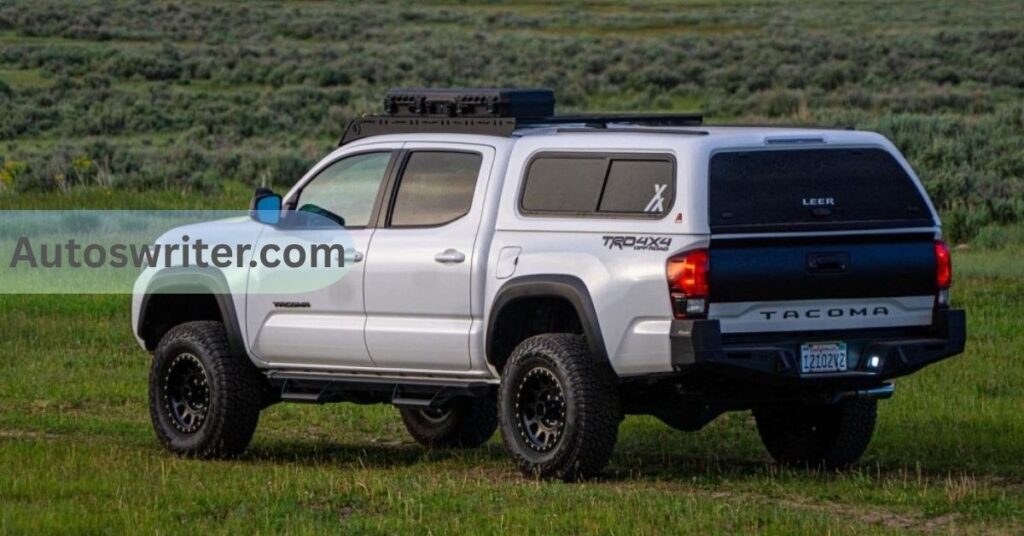
ARE offers several shell models that fit Tacomas. Each model has a different roof height and styling:
1. V Series:
A bare, budget-friendly shell. It has smooth, clean lines for a traditional look. The V Series “offers traditional styling with smooth, clean lines…for customers who want quality and function without breaking the bank”. It can include practical options, such as a side toolbox, making it popular among contractors. The starting price is approximately USD 2,450 for a standard-size shell. (Long-bed shells are ~175 lb.)
2. Z Series:
A higher-end, upscale shell. The Z Series has a sleek, SUV-like look. It uses a frameless rear door design and screen-vent side windows that give “a sleek SUV look”. An optional keyless entry system allows you to lock and unlock the shell using the Tacoma’s key fob. It starts at around USD 4,299 and weighs about 190 pounds for a long-bed shell. This model is often chosen for style and extra features.
3. Overland Series:
A rugged, off-road style shell. The Overland features a two-tone design and a spray-on protective coating applied to high-stress areas. This textured finish resists scratches and chips when loading gear or driving off-road. It still has glass rear and side windows but with a tougher look. The Overland is ideal for camping and overlanding trips. It starts around USD 3,199 base. (Weight is similar to other mid-height shells, on the order of ~190–200 lb.)
4. MX Series:
A mid-rise shell with extra headroom. The roof of the MX is higher in the back, giving more vertical space. “The MX Series’ mid-high roof provides more headroom and storage capacity… The exclusive walk-in door option provides effortless access plus better line-of-sight” when towing. In other words, it’s useful if you want to stand or access tall cargo easily or if you tow a trailer (the step helps you see behind you). The price starts at around USD 3,250. A long-bed MX shell weighs approximately 200 pounds.
5. TW Series:
A taller rear-profile shell (sometimes called a “trail walker”). The TW rises smoothly toward the back for maximum headroom and an aerodynamic shape. ARE describes it as giving “maximum head room, easy access, and aerodynamic styling” so that air flows efficiently over gear or trailers. It’s suitable for hauling very tall gear or mounting rooftop tents. The base price is ~ USD 3,450, with a weight of ~200 pounds.
Each model can be painted to match the truck, and many factory options (like roof racks, colours, etc.) are available. For example, the Walk-In Door (full side door) can be added to MX, TW, or Overland models, and even a ventilated “Pet Screen” can be installed on slider windows. A very high-quality HD Series shell is also offered (mainly for big trucks) that can carry heavy loads, but Tacomas usually use one of the above fibreglass models.
Also Read: Reset the Maintenance Light on a Toyota Corolla-Step by Step Guide
ARE Tacoma Materials, Windows, Locks, and Options:
1. Materials:
Most Tacoma shells are fibreglass (with a gel coat paint finish). Fibreglass provides a smooth, painted appearance that can match the truck’s colour. ARE does offer some aluminium shells in its commercial lines, but for consumer models like Tacomas, you’ll mostly see fibreglass. The standard fibreglass shell is strong yet not excessively heavy (generally 150–200 lb). All frames and mounting rails are sturdy, and key components (such as locking mechanisms and lights) come with limited warranties.
2. Windows and Ventilation:
ARE shells have several window options. The rear door is usually a framed or frameless glass hatch that lifts (like an SUV’s hatchback). The Z Series even has a frameless rear glass design. Side windows come in various styles; for example, half-height sliding glass with built-in screens is a common choice.
Some owners add screen-vent windows that allow air to flow in without exposing the interior to the weather. There is also an optional window or full swing-out side door that can include a window or vents. In forums, owners stress the value of sliding or vented windows: one said that “vented windoors or sliding windows with pet screens are an option on most ARE tops,” enabling airflow. (By contrast, shells with only fixed tilt-out glass have poorer ventilation.)
3. Locks and Security:
All ARE shells are lockable. Standard models use keyed T-handle locks on the tailgate (usually a single or optional double T-handle). The Z Series offers an optional keyless entry feature, allowing you to lock and unlock the shell using your truck key fob, just as if it were part of the truck. Some dealer-installed upgrades (like ARE’s SlickLock latch or slide-in bars) add security, but generally, the rear door is as secure as your truck’s doors. Remember that no cap is burglar-proof; it mainly deters casual theft.
4. Accessories and Upgrades:
ARE and dealers offer a wide range of accessories. You can add roof-mount rack systems (brands like Yakima or ARE’s Ascend roof basket) to carry bikes, kayaks, or luggage. LED light bars (e.g., Rival LED) can be mounted on the roof for camping use as a light source. Inside the shell, options include 12-volt power strips, interior LED dome lights or rope lights, and carpeted liners.
For example, the catalogue features items such as a 12-volt dome light and interior rope lights. Pet owners often install mesh window protectors (available from ARE) to prevent dogs from scratching the glass. Other upgrades include gas-propelled support hinges (to make the rear door lighter) and TopperEZLift (a strut kit to assist with lifting the hatch). In short, you can customise lighting, racks, screens, and more to suit your specific needs.
5. Warranty:
ARE provides a limited lifetime warranty on fibreglass shells for original owners. This covers structural defects in the cap and paint fading, essentially as long as you own the truck. (Aluminum or commercial models may have shorter warranties.)
Hardware items, such as locks and lights, are typically warranted for one to three years. Note that ARE explicitly states it “cannot guarantee a watertight seal”, so any leaks are not covered as defects beyond the limited warranty period. However, the build quality is generally high; many owners (especially after silicone sealing at installation) report no leaking.
How Tacoma Shells Support Common Uses:
ARE shells are popular because they support many Tacoma uses:
1. Camping & Overlanding:
A shell effectively turns the bed into a small RV-like space. You can keep sleeping bags or a mattress in the back without needing to pack and unpack them. They provide instant shelter – no setup is required at camp. For example, one owner wrote that with a shell, “you can easily have a makeshift bed” in the truck. The Overland model is specifically designed for rugged trips, featuring a reinforced coating for off-road wear. Many campers also add floor insulators or rooftop tents on top of the shell.
An ARE shell at a lakeside camp (above) demonstrates how Tacoma’s bed can be transformed into a sheltered space. Shells keep gear dry and create a covered sleeping area.
2. Pet Transport:
Shells can protect pets from sun and rain while riding. Owners often cut dog ramps or crates to fit inside and use mesh window screens for fresh air. One Tacoma user mentioned that his dog “likes looking out the rear door” of his MX shell, illustrating how shells allow pets to ride comfortably. ARE even sells pet-screen accessories to cover windows. In hot weather, open windows (with screens) help ventilate.
3. Work and Storage:
Contractors and tradespeople use shells to secure tools and equipment. For example, the V Series offers a side toolbox option for storing tools under lock. The shell’s lockable rear keeps power tools or loads hidden and protected from the elements. Many construction drivers appreciate that they can leave the cap on year-round, unlike a soft cover, which can be removed and replaced.
4. Everyday Cargo Protection:
Even for weekend use, a shell protects groceries, bikes, or luggage from theft and rain. As RealTruck explains, camper shells “protect cargo” by keeping it covered and lockable. Farmers, boaters, or any Tacoma owner can use a shell to shield gear (coolers, sports equipment, etc.) at all times.
5. Special Use:
Some owners adapt shells in creative ways. With lights and side steps, the shell can be a mobile workshop. Others mount solar panels or even install mini-pantry inside for tailgating. In most cases, the shell adds utility to the truck bed.
Also Read: Toyota Entune Navigation Update-Explained Clearly
Toyota Tacoma Model Comparison Table:
| Model | Key Features | Price Range (USD) | Typical Use | Approx. Weight |
| V Series | Smooth fiberglass shell, clean lines; optional side toolbox | ~$2,450 (base) | Everyday cargo & work use (contractors) | ~175 lb |
| Z Series | Frameless rear door, SUV-like styling; vented side windows; optional keyless lock | ~$4,300 (base) | High-end look & camping (preference for style & features) | ~190 lb |
| Overland | Two-tone rugged finish; spray-on protective coating | ~$3,200 (base) | Off-road adventures/overlanding (gear protection) | ~200 lb (est.) |
| MX Series | Mid-rise roof; walk-in door option for easy access | ~$3,250 (base) | Camping/sleeping (extra headroom) | ~200 lb |
| TW Series | Tall rear profile; aerodynamic slope for airflow | ~$3,450 (base) | Hauling tall gear/trailers; extra interior space | ~200 lb |
Approximate prices are based on U.S. factory prices (actual dealer prices may vary depending on options). Weights are based on the long-bed cap specifications provided by the manufacturer.
Tacoma Owner Feedback and Reviews:
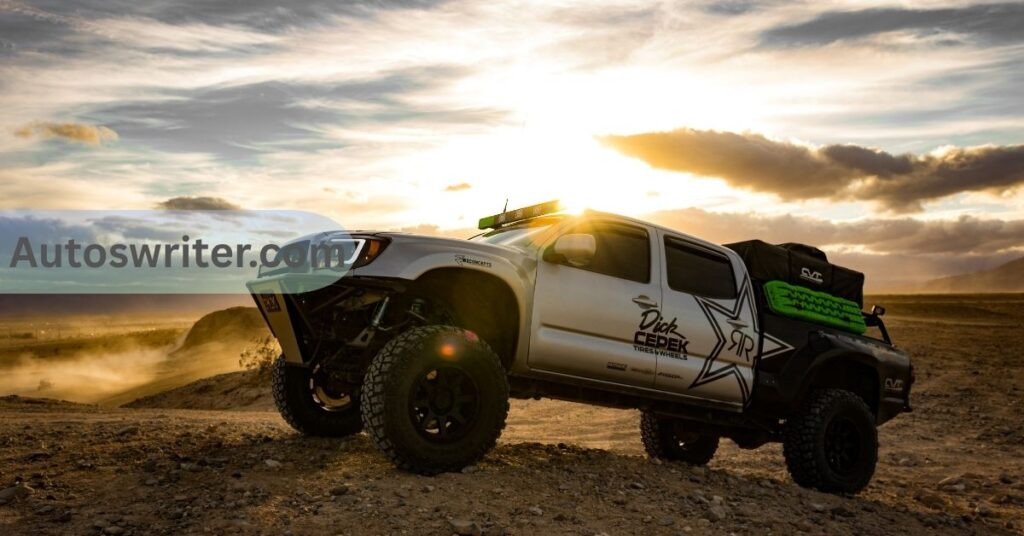
Tacoma owners on forums generally praise ARE shells for their practicality but also note some downsides. On the plus side, many say the fit and finish are solid, and leaks can be solved by proper sealing. One user reported his ARE CX Evolve “works great, no issues with leaking either”. Another Tacoma owner (with an Overland/CX cap) said it “doesn’t leak” after a dealer silicone seal, and he insisted he’d never go back to a truck without a cap. The streamlined design even improved highway cruising – that owner noted using 6th gear again thanks to better aerodynamics.
On the downside, common complaints include weight and appearance. Fiberglass caps add ~150–200 lb, which can make the truck feel heavier. One reviewer said his shell made the Tacoma look like “a long SUV” and was “definitely heavier” to drive.
Fit and finish issues (like slight water intrusion) sometimes occur if installation isn’t perfect. As one bluntly put it about a different ARE model, “they all leak” under hard rain. Others note that the rear window latch must be hit just right or that fixed (non-sliding) windows reduce airflow. Venting and screens help a lot. In summary, owners love the secure, dry space and style of ARE tops but remind new buyers to install them carefully and expect a slight increase in weight.
ARE Tacoma Cost Estimates (U.S. and Canada):
In the U.S., an ARE Tacoma shell costs roughly $2,500–$4,500 before taxes and paint match, depending on the model and options. For example, the entry-level V Series starts at approximately $2,450, while a fully loaded Z Series base model is around $4,299. Mid-range models like Overland, MX, and TW are in the $3,200–$3,500 range base.
Each option (windows, racks, lighting, paint) can add several hundred dollars. Dealers sometimes bundle installation or advertise special pricing. On forums, some buyers paid around $2,600 for a basic V or MX, while others spent $4,000 or more with many upgrades. Used shells often sell for $1,000 to $3,000, depending on their condition and rarity.
In Canada, prices are higher. One Canadian buyer found a comparable Leer shell for over CAD 7,000 fully loaded, reflecting duties and fewer dealers. A local listing showed a used ARE shell (6′-bed Contractor model with side toolbox) at CAD 3,495.
New ARE shells in Canada can cost anywhere from $5,000 to CAD 7,000, including paint matching and options. Always get a detailed quote from a dealer — prices vary by region. Factor in that higher-end paint jobs and raised roofs are more expensive. In any case, camper shells are a significant investment, so many buyers weigh new vs used options.
Tacoma ARE Shell Installation and Maintenance:
Installing an ARE shell is usually straightforward. Most tops are clamp-on designs. The shell sits on the bed rails and is secured with threaded turnbuckle clamps (no drilling required). For example, a dealer part list might show clamps at $10 each and installation labour at around $59.
Installation typically involves lifting the shell onto the truck, aligning it, and securing it with clamps along the rails. (Professional installation is recommended for proper sealing, but some experienced homeowners opt for a DIY approach.) To remove the shell later, ARE advises placing alignment marks on the rails, disconnecting any brake and lighting wires, and then unscrewing the clamp fasteners.
Maintenance is also simple. Treat the shell-like your truck paint – wash by hand and wax after the first 60 days. Avoid automatic car washes with brushes. Especially watch for bird droppings or sap and remove them quickly. Lubricate the lock cylinders and hinges with lithium-based grease to prevent them from sticking. Check the clamp bolts periodically (engine vibration can loosen them).
Inspect the rubber seals around windows and doors for wear or debris. Interior care might include vacuuming and cleaning spills. In winter, gently brush off the snow (avoid using an ice scraper on the shell). If the shell has gas struts on the door, do not wipe the shafts with oil or harsh solvent. If you ever need to remove the cap (for repainting or repair), save the dealer documentation and follow the basic steps (unplug wires, remove clamps, etc.).
Tips for Choosing the Right Tacoma Shell:
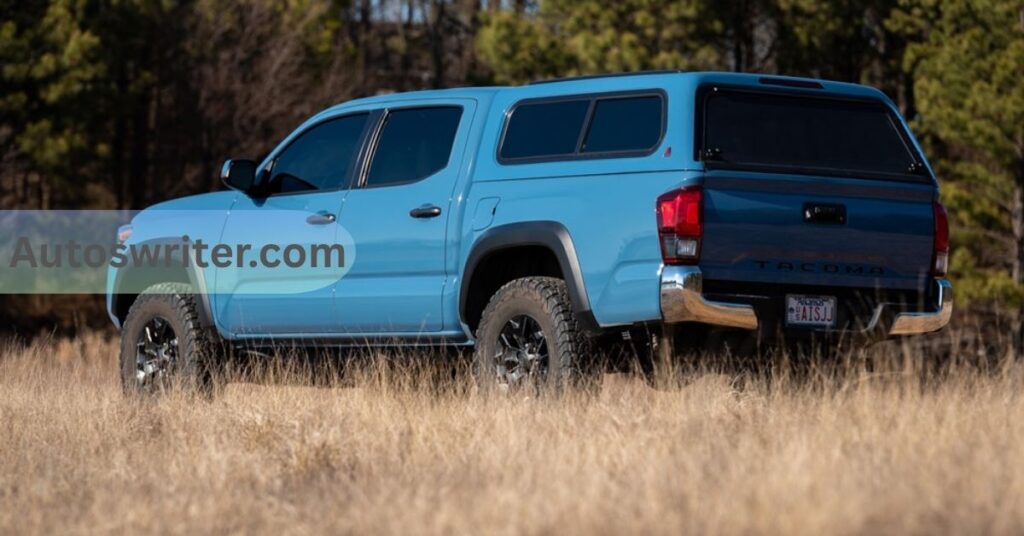
When picking an ARE shell for your Tacoma, consider your primary use and conditions:
1. Use/Space Needs:
If you camp or frequently haul tall items, opt for a higher shell (MX or TW), which gives more interior height. These make it easier to stand or fit gear. If you primarily need secure storage or a low-profile look, the lower V or Z series may be sufficient. Contract workers often prefer the V Series, which features an optional side toolbox.
2. Ventilation/Pets:
For dogs or hot climates, get slider windows or vented “wi indoors. A Tacoma owner advises that “windows are a must” for airflow. Additionally, consider the optional pet screen kits to prevent your dog’s paws from getting on the glass. A vented front window or small roof vent can also help air out the cab in summer.
3. Security:
If you carry expensive tools or gear, make sure the shell has heavy-duty locks. For maximum convenience, the Z Series’ keyless entry option allows you to lock the cap with your truck key. Verify that all doors (including the side and rear) lock securely. Remember that a shell adds theft deterrence, but it isn’t foolproof.
4. Climate:
In rainy or snowy areas, ensure all seals are in good condition and consider paying for a dealer sealant to reduce leaks. If your truck is used in the sun, a colour-matched shell helps avoid fading differences. In freezing weather, be aware that condensation can accumulate inside. Good ventilation or the use of moisture-absorbing products can help mitigate this issue.
5. Truck Load Capacity:
Please note that an ARE shell adds approximately 150–200 lb (depending on the model) to your truck’s weight. Check the Tacoma’s payload rating (usually around 1200–1500 lb, depending on the year and cab type) and deduct the shell weight. Additionally, weight on top (such as racks or tents) further loads the roof. Some owners install bed stiffeners if carrying heavy loads regularly. ARE notes that even their heavy HD rack tops are designed for 550 lb on the rack, so your Tacoma should handle normal gear loads safely.
6. Budget:
Higher shells (with spray-on coating or tall roofs) cost more. Decide which features you need. Sometimes, a used shell or a base model is enough. Shop around — ask multiple dealers — and look for combos (some sellers bundle installation).
By matching the model to your use — e.g., V series for work or storage, MX/TW for overlanding or camping, Z for style — you’ll get the best value. Always inspect a used shell for cracks or leaks. And if security is a top concern, focus on lock quality and one-piece glass designs.
Frequently Asked Questions:
Q1. What camper shell fits a 2024 Tacoma?
ARE now offers caps for the new 2024 Tacoma. Dealers report that an ARE truck cap (likely the CX Evolve model) fits the 2024 Double Cab trucks. SmartCap is another maker releasing one soon. In short, YES – you can get an ARE shell made for the 2024 Tacoma as of 2024.
Q2. Are shells waterproof?
ARE shells are close to watertight, but they do not promise 100% waterproofing. ARE’s literature warns that it “cannot guarantee a watertight seal”. In practice, a properly installed shell with tight seals usually keeps out rain. Many owners add silicone sealer during the installation process. One owner noted after sealing, his Overland shell “doesn’t leak”. While minor seepage at window corners can happen, an ARE shell installed correctly will be water-resistant.
Q3. Can you sleep in an ARE camper shell on a Tacoma?
Yes – many Tacoma owners sleep in their truck beds under the shell. You can drop the tailgate and slide it into a sleeping pad or small mattress. The shell protects you from rain and wind. As one user put it, with a shell, “you can easily have a makeshift bed”. Just remember to ventilate (open a window) and watch for carbon monoxide if you use a heater inside.
Q4. How much weight can the roof hold?
The allowed roof load depends on your shell and rack system. ARE rates its HD Series shells to carry up to 550 lb on the roof rack (distributed evenly). Other models should be similar or slightly less. However, also check your Tacoma’s roof rating (usually around 300–400 lb total), as the truck’s structure is the limiting factor. In practice, don’t overload – 200–300 lb is a safe guideline on most Tacoma shells. Always load evenly and use proper racks or tie-downs as recommended.
Q5. Do camper shells affect fuel economy?
Yes, adding a shell slightly changes fuel economy, but often for the better compared to other gear. The extra weight and wind profile can slightly reduce MPG. However, fibreglass shells are more aerodynamic than tall tents or open racks. In one test, a Tacoma with an ARE shell and gear was 150 lb lighter than the same gear on a roof tent, and the truck could resume highway cruising at 6th gear. In short, expect some impact on fuel efficiency (possibly a few percentage points drop), but a sealed shell usually outperforms a bulky roof load.
Conclusion:
An ARE camper shell transforms the Toyota Tacoma from a simple pickup into a highly versatile utility and adventure vehicle. Whether you’re a weekend camper, a daily commuter, a pet owner, or a tradesperson, there’s a shell model that can enhance your truck’s function and style.
With multiple roof heights, window options, and accessories, ARE caps offer flexibility for any lifestyle—from sleek, SUV-like looks to rugged, off-road durability. While they represent a significant investment, many Tacoma owners find the added security, weather protection, and cargo versatility well worth the price. With proper installation and care, an ARE shell can become one of the most valuable and lasting upgrades for your Tacoma.
